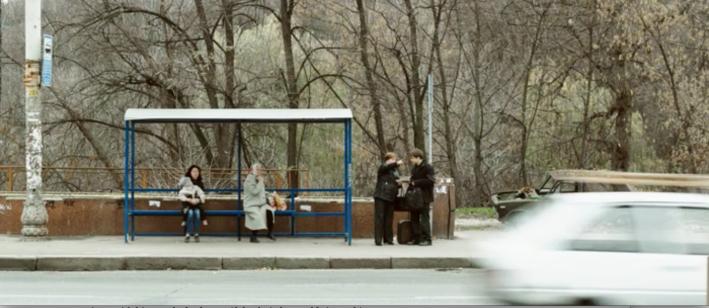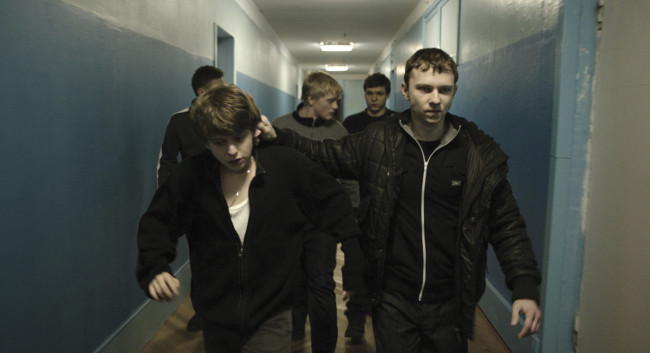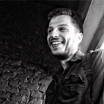By Mikhail Karadimov June 21st, 2015
The Tribe punches and spits, it spears you to the ground, and then finishes you off with a swift and incisive kick to the head. You want to claw into your body and untie the knot of intestine building with bile, down below, in the deepest recess of your gut. The Tribe causes you to lose your bearings, forget where you are; its spontaneous moments of savagery triggers a surge of adrenaline, immediacy, that sets you off into an aimless trek through a world that shares a physical resemblance to ours, but none of its codes or brands of isolation.
First time director, Myroslav Slaboshpitskiy, initially got the idea for The Tribe (or, Plemya, as it’s known in its native tongue) while reminiscing about his time as a middle school student. Nearby was another school. An institute for the deaf. Slaboshpitskiy wasted many hours daydreaming, mesmerized by the way his neighbors communicated. Their gestures, their kinetic, but quiet presence, the way their hands gave physical shape to language. It left Slaboshpitskiy transfixed. As he stated in a recent interview with The New York Times: “For me, it looked like they had the highest level of communication, and they could exchange feelings and emotion between each other without speaking. It looked like a miracle to me.”

So it’s no surprise that—as an outsider, and a director who couldn’t communicate with his mostly deaf cast—Slaboshpitsky would situate his opening shot across the street from our protagonist (Grigoriy Fesenko) as he steps off a bus and into a foreign land. The young man spins a slow 360 to survey his new habitat. He doesn’t know where to go, how to find the local academy for the deaf. The young man—with the softest face, and the most disarming set of eyes cushioned in tired flesh—asks the old lady beside him for directions by jabbing at a map and grunting question marks. He waves all around to convey his displacement.
The moving traffic blocks us from full access. It obscures the young man from us with the occasional bus. We see his disembodied head through a window, searching for its station in life. The window frames the young man tight, edging the woman out, as if neither of them share the same world. We’re both cut off from him: the woman and us. We will never be able to understand him, his plight. Wrestling for a link of communication with him is a nihilistic endeavor. It’s probably why Slaboshpitsky doesn’t even bother with translating the “dialogue”. Instead, he opts for the bewildering effect of silence, punctuated by sharp and violent sign language.
After receiving directions from the old woman—maybe not the clearest—the boy takes one last look around and goes downstairs, into an underpass, and disappears from sight. He descends into a concrete underworld entrenched in hard truths.
Within several minutes—in the very first shot—Slaboshpitskiy has successfully severed us from the boy, and the boy from us. He’s leveled the playing field.
Now no one understands. Everyone’s alone.







